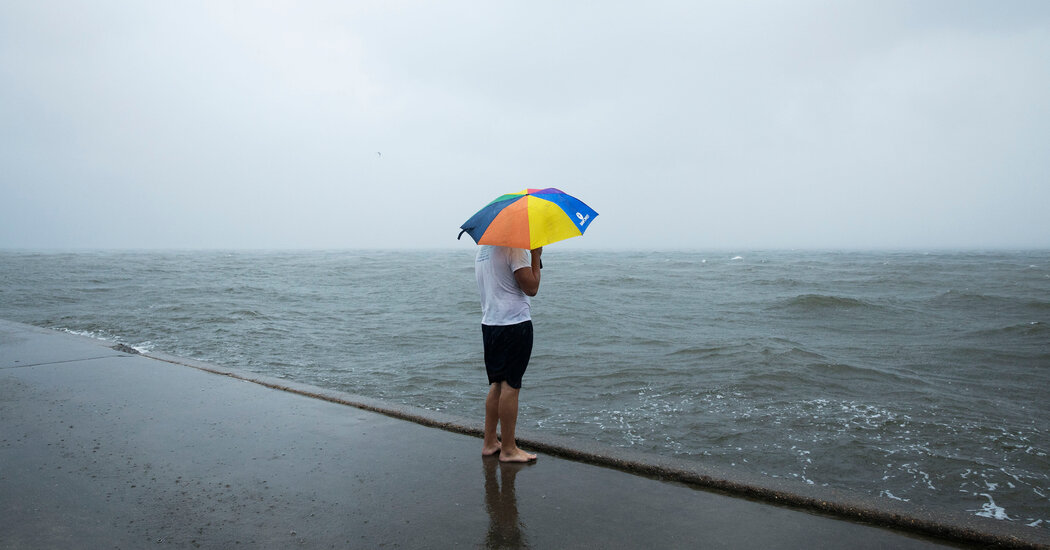
“We’re seeing a rise in the proportion of hurricanes that reach major hurricane status, Category 3 and above,” Dr. Emanuel said. “That’s what we’re unequivocally seeing in the satellite data.”
James Kossin, also with NOAA, has done research lending further support to the idea that hurricanes are getting more powerful. With continued warming, he suggested, “you’ll start to see intensities like you’ve never seen before,” even storms packing 250-mile-per-hour winds. (Major hurricanes, beginning with Category 3, have wind speeds between 111 and 129 miles per hour. A Category 5 storm, currently the most powerful classification, is 157 m.p.h. and above.) “It’s only a matter of time,” he said.
Other research suggests that hurricanes may be weakening more slowly after landfall, increasing their destructive abilities, and that storms are slowing down, lingering as they approach and stretching out the damage over longer time periods.
Between the greater water vapor in the atmosphere and the storm slowdowns, Dr. Kossin said, there has been a 41 percent increase in local rainfall associated with storms that move over land. In addition, he said, the tracks of storms are shifting away from the tropics and are heading farther north, with a subsequent expansion of the range of storm risk.
The area of strongest debate concerns whether climate change has a role in the rising number of hurricanes in the Atlantic. Recent research suggests a strong role for human actions, though not all of those actions are directly related to climate change.
The more conservative faction of scientists attributes much of the rise in storms to natural variability and a cycle of ocean warming and cooling known as the Atlantic Multidecadal Oscillation; NOAA scientists cited the phenomenon as one of the main factors in the rise in last year’s forecast of an active season. Other climate scientists, including Michael Mann of Pennsylvania State University, have cast doubt over whether the oscillation exists at all.
Dr. Emanuel of M.I.T. is one of a growing number of scientists who state that the large increase in the number of Atlantic storms is caused by humans, but not mainly because of global warming. The fact that the number of storms dipped in the 1970s and 1980s is in no small part related to pollution, they say — in particular, atmospheric sulfur pollution floating out over the Atlantic from Europe during the postwar boom that cleared up as environmental regulation began cleaning up the skies. “Almost certainly, the hurricane drought of the ’70s and ’80s was an aerosol-related phenomenon,” Dr. Emanuel said.
The finding, he said, “reminds everybody that our influence on climate goes beyond greenhouse gases.”
Christopher Flavelle contributed reporting.

Average Rating